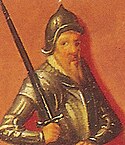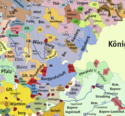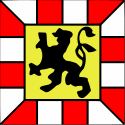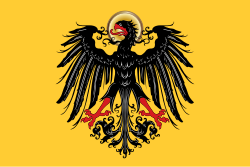Norimberské purkrabství
| Norimberské purkrabství Burggrafschaft Nürnberg
| |||||||||||
Geografie
| |||||||||||
| Obyvatelstvo | |||||||||||
| Státní útvar | |||||||||||
| Státní útvary a území | |||||||||||
| |||||||||||
Norimberské purkrabství (německy Burggrafschaft Nürnberg) byl stát Svaté říše římské od počátku 12. do konce 15. století. Vystřídaly se zde rody Raabů a Hohenzollernů. Název vznikl od německého města Norimberk (Nürnberg), které bylo purkrabským sídlem. Nazýváno norimberským bylo i poté, kdy purkrabství ztratilo nad městem kontrolu v roce 1219 a Norimberk se stal svobodným říšským městem. Purkrabství zaniklo v roce 1440, kdy bylo rozděleno na Braniborsko-ansbašské markrabství a Braniborsko-baroutské markrabství.
Galerie
- Purkrabský hrad (Burggrafenburg), část Norimberského hradu
- Norimberský hrad, pohled na Císařský hrad (Kaiserburg)
- (c) Keichwa, CC BY-SA 3.0hrad Kadolzburk, sídlo norimberského purkrabího od roku 1260
- znak purkrabství:
- v době Raabů
- v době Hohenzollernů
- okno se znakem norimberského purkrabího Hohenzollernů
Reference
V tomto článku byl použit překlad textu z článku Burgraviate of Nuremberg na anglické Wikipedii.
Externí odkazy
 Obrázky, zvuky či videa k tématu Norimberské purkrabství na Wikimedia Commons
Obrázky, zvuky či videa k tématu Norimberské purkrabství na Wikimedia Commons
Média použitá na této stránce
Autor: Mikmaq, Licence: CC BY 3.0
The remains of the Burggrafenburg in the city of Nuremberg, Germany
Autor:
- Limburg_New_Arms.svg: Ipankonin
- derivative work: OwenBlacker
Coat of arms of the Principality of Ansbach. Blazon: Or a lion rampant sable, queue fourchée, armed, langued and crowned gules.
Autor: Rebecca Kennison, Licence: CC BY 2.5
Coat of arms of the Hohenzollern family at Burg Hohenzollern in southern Germany.
Coat of arms of Bamberg
Autor: DALIBRI, Licence: CC BY-SA 3.0
Nuremberg Castle in autumn 2013 from the southwest
Autor:
- Heraldique piece bordure componee.svg: S@m
- Wappen Brandenburg-Ansbach.svg: OwenBlacker
- derivative work: OwenBlacker | Discussion
Coat of arms of the Burgraves of Nuremberg. Blazon: Or a lion rampant sable, queue fourchée, armed, langued and crowned gules, a bordure compony argent and gules and argent.
Autor: --TECHNOKRAT (talk) 14:55, 2 October 2008 (UTC), Licence: CC BY-SA 3.0
Wappen der Burggrafen von Nürnberg - Eventuell das Wappen der Herren von Raabs
Autor: Chatsam, Licence: CC BY-SA 3.0
coats of arms of Christiane Eberhardine of Brandenburg-Bayreuth
Anachronistic representation of the royal banner of the 12th(?) or 13th to early 15th centuries.
The banner of this period would be square in shape, and the eagle would not have a halo.
The black eagle in a golden field was the ensign of the German kings (as opposed to the emperor) in the 12th and 13th century, but in the 14th century, it was gradually re-interpreted as representing the empire. An early reference to such a banner as "imperial" is made in an account of the burial of Charles IV (d. 1378), as der schwartz adler des richs in einem guldin veld .Autor: MostEpic, Licence: CC BY-SA 4.0
Arms of the house of Hohenzollern, as Burgraves of Nuremberg























